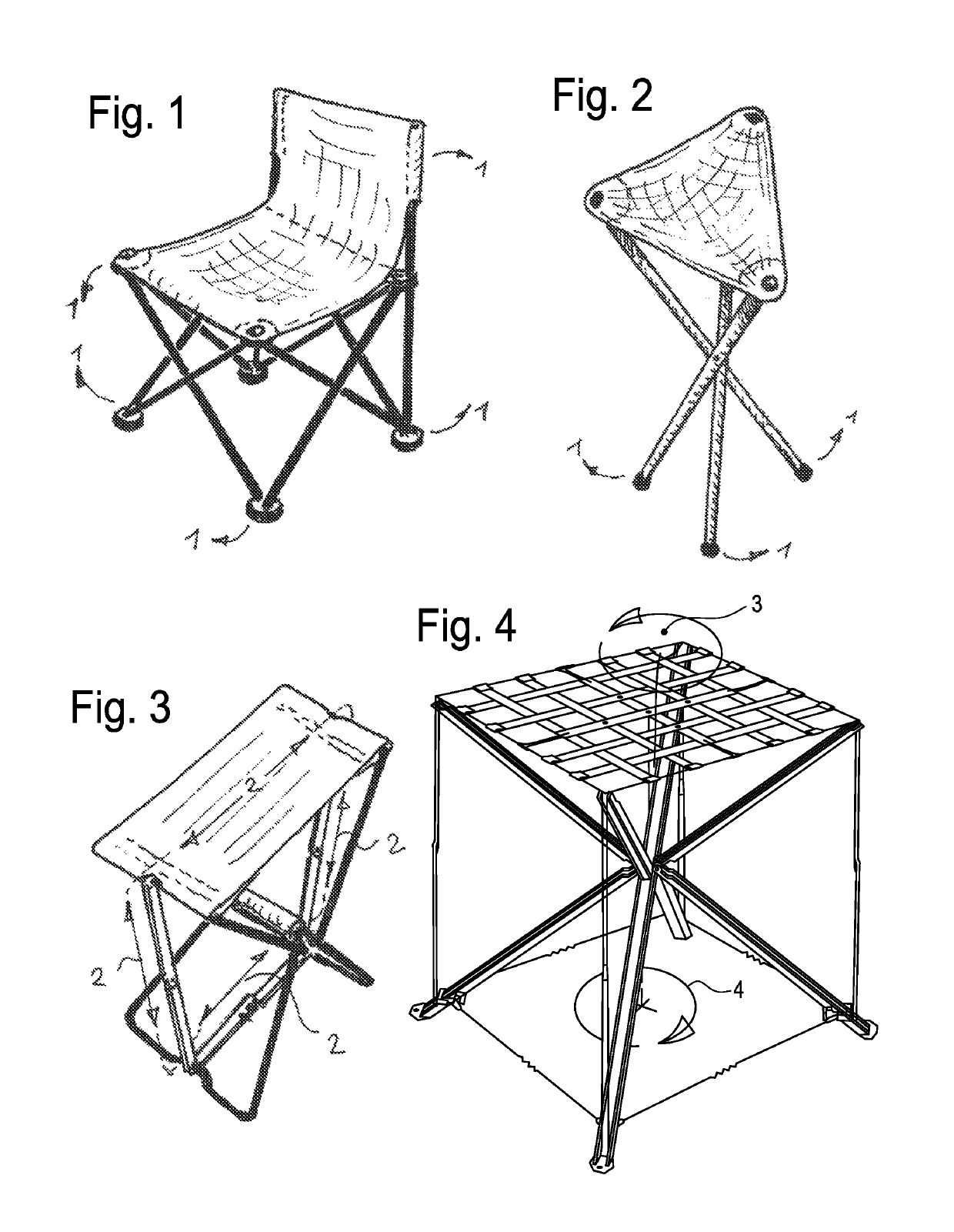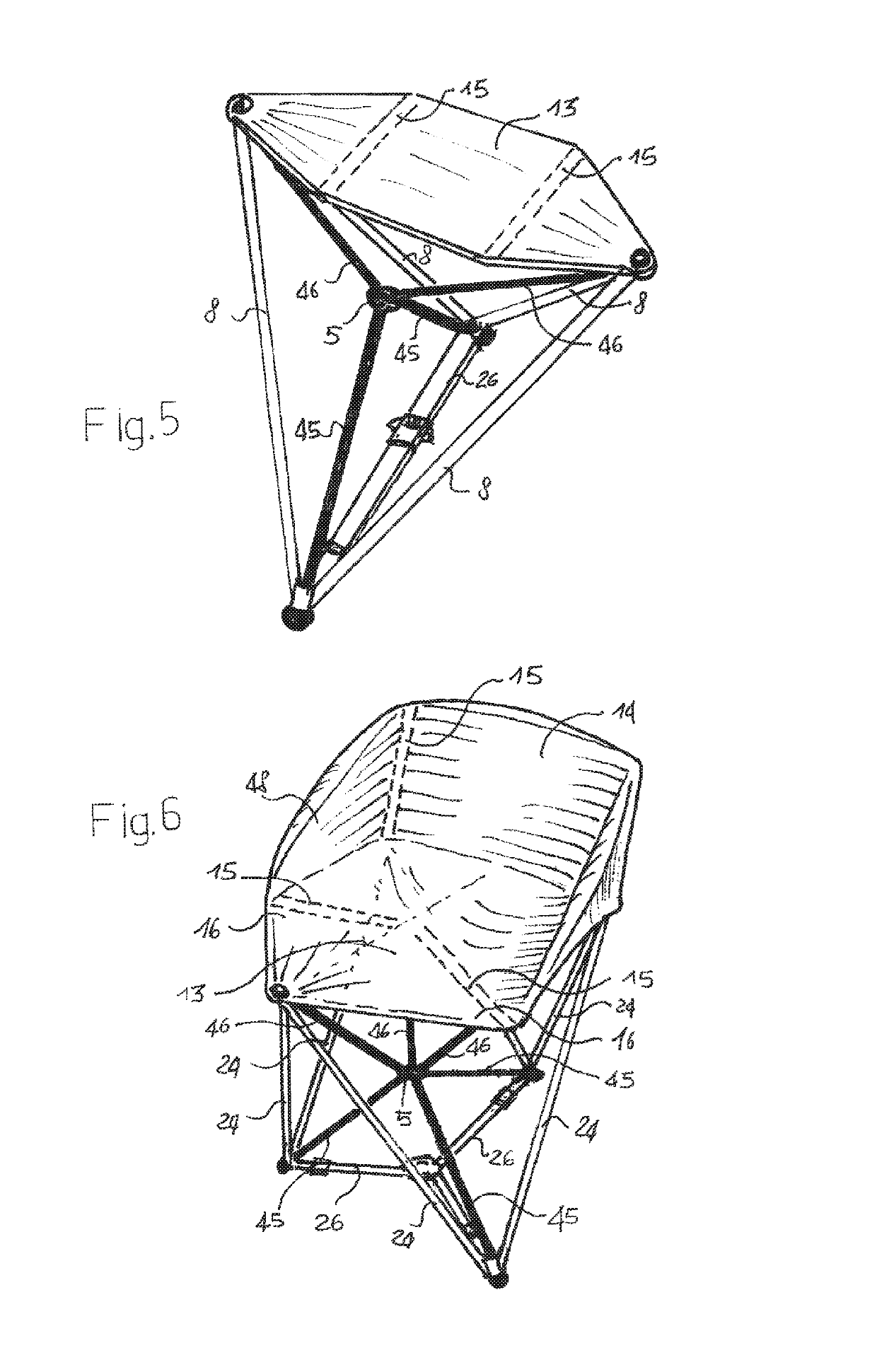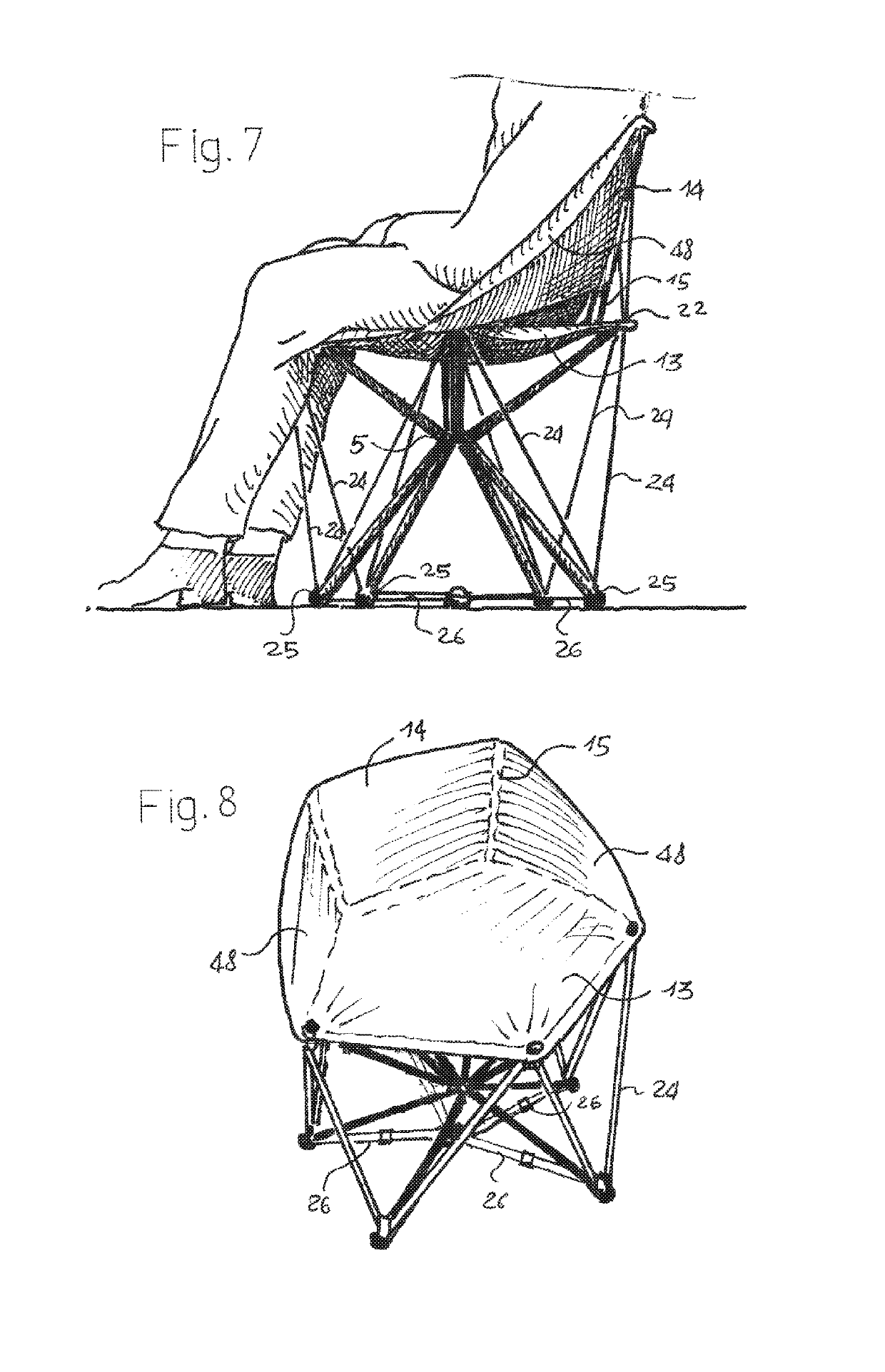Support apparatus, such as a seat, foldable and portable
a supporting apparatus and folding technology, applied in the field of folding and portable supporting apparatuses, can solve the problems of high material cost compared to sustained weight units, microchairs weigh a little less than one kilogram anyway, and achieve the effects of reducing weight, facilitating use, and stable constrain
- Summary
- Abstract
- Description
- Claims
- Application Information
AI Technical Summary
Benefits of technology
Problems solved by technology
Method used
Image
Examples
Embodiment Construction
[0049]As set forth in the next part of the present description, the primary concept of the invention can be extended to object meant for different functions, but which are all foldable supporting structures for people or objects. In the specific instance the concept of the present invention not only enable to make chairs, but also to make stands, tables, folding beds and others similar items. The said particular examples are not exclusive, those solutions referring to the attached drawings concerning the case of a chair, are not to be meant with a restrictive sense but they can be widen to other apparatuses. In general, the invention concerns the innovative use for these supporting apparatuses of an unusual structural principle and of some further technical applications, which enable to easily use and fold these apparatuses. In the sample four-legged chair presented in FIG. 7, when in use, a central junction (5) hinges the ends of the four poles pointing downwards (7) and of those p...
PUM
 Login to View More
Login to View More Abstract
Description
Claims
Application Information
 Login to View More
Login to View More - R&D
- Intellectual Property
- Life Sciences
- Materials
- Tech Scout
- Unparalleled Data Quality
- Higher Quality Content
- 60% Fewer Hallucinations
Browse by: Latest US Patents, China's latest patents, Technical Efficacy Thesaurus, Application Domain, Technology Topic, Popular Technical Reports.
© 2025 PatSnap. All rights reserved.Legal|Privacy policy|Modern Slavery Act Transparency Statement|Sitemap|About US| Contact US: help@patsnap.com



